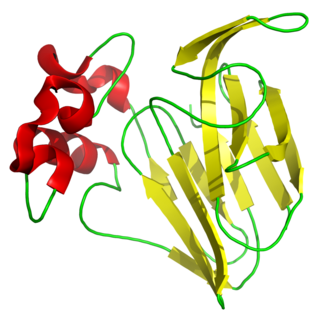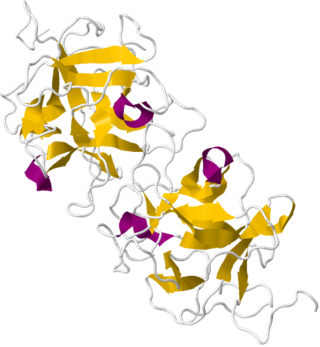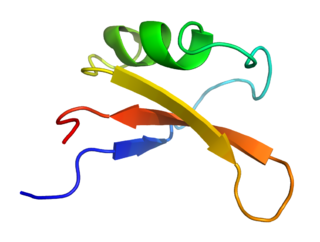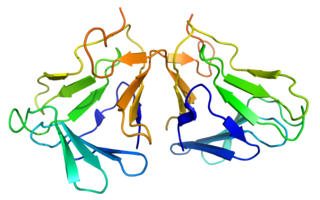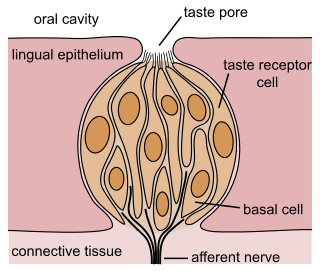| Defensin-like protein | |||||||
|---|---|---|---|---|---|---|---|
| Identifiers | |||||||
| Organism | |||||||
| Symbol | ? | ||||||
| UniProt | P56552 | ||||||
| |||||||
Pentadin, a sweet-tasting protein, was discovered and isolated in 1989, in the fruit of oubli ( Pentadiplandra brazzeana Baillon ), a climbing shrub growing in some tropical countries of Africa. [1] Sweet tasting proteins are often used in the treatment of diabetes, obesity, and other metabolic disorders that one can experience. [2] These proteins are isolated from the pulp of various fruits, typically found in rain forests and are also used as low calorie sweeteners that can enhance and modify existing foods. [2]
Contents
- Physical properties
- Uses
- Growing interests in artificial sweeteners and sweet-tasting proteins
- See also
- References
Pentadin and brazzein were discovered in 1994, and are the 2 sweet-tasting proteins discovered in the African fruit, Pentadiplandra brazzeana . [3] Pentadiplandra brazzeana consists of a red outer-shell that contains three to five seeds inside of it, which are covered by a layer of red pulp that contain brazzein and pentadin, sweet tasting proteins. [3] Pentadiplandra brazzenna Baillon bears red berries that are about 2 inches in diameter and contain the sweet tasting proteins, Brazzein and Pentadin, as discussed above. Brazzein and Pentadin are extracted from the same fruit however Pentadin is extracted from the fruit after it is heat-dried and Brazzein is extracted from the fresh form of the fruit. [4]

The fruit has been consumed by the apes and the natives for a long time. The berries of the plant were incredibly sweet African locals call them "j'oublie" (French for "I forget") because their taste helps nursing infants forget their mothers' milk. [6]
Sweet tasting proteins have been known to exist for many years and indigenous people have been known to use these proteins as a way to add sweetness to their foods without the use of other sweetening agents, such as sucrose. [7] The sweetness of Pentadin has been estimated to be about 500 times more than Sucrose, when looked at on a weight basis. [7]
The molecular weight of Pentadin is estimated to be 12kDa and has a sweetening ability of 500 times moe than sucrose. This sweet tasting protein is known to resemble monellin on a sweetness basis and is higher than thaumatin. [8]
Pentadin is the second protein discovered in Oubli ( Pentadiplandra brazzeana) and is similar to Brazzein, the first protein discovered from Pentadiplandra brazzeana . More structural analysis has been done on Brazzein than on Pentadin and it is difficult to understand the particular structure of Pentadin however, some of the structural properties of Brazzein can be applied to Pentadin. Brazzein contains two regions that are particularly critical for the sweetness of the protein, the N- and C- terminus of the protein, and a region of the protein that contains the flexible loop around Arg43. The exact properties for Pentadin are unknown, however we can apply particular regions of the N- and C- terminus regions to the structure of Pentadin as they are both derived from the same fruit (Pentadiplandra brazzeana). [9]
There are six sweet-tasting proteins - pentadin, thaumatin, monellin, mabinlin, brazzein, and curculin - all of which are isolated from plants in tropical forests. These proteins show no similarities in a structural or homologous sequence aspect. All of these sweet tasting proteins have different molecular lengths, with no sequence homology and little to none structural homology. Efforts to identify structural similarities among sweet tasting proteins included using the 3D structures and DALI to find similarities. However only a vague resemblance was found for the three proteins tested, monellin, thaumatin, and brazzein. [10] Brazzein and thaumatin invoke respinses in humans through the T1R2-T1R3 receptor and can be applied t Pentadin a Brazzein and Pentadin are similar to one another. These repsonses in the T1R2-T1R3 receptor are similar to the small molecular weight sweeteners that include popular sweeteners. [10] Proteins cannot generally stimulate taste receptors like sugar normally does, however the identified sweet tasting proteins, such as monellin, thaumatin, pentadin, curculin, and mabinlin are able to interact with one's taste receptors to create a sweet taste. Very low concentrations of these sweet tasting proteins are required for them to interact with our receptors, therefore they are also known to be low calorie sweeteners. [11]





